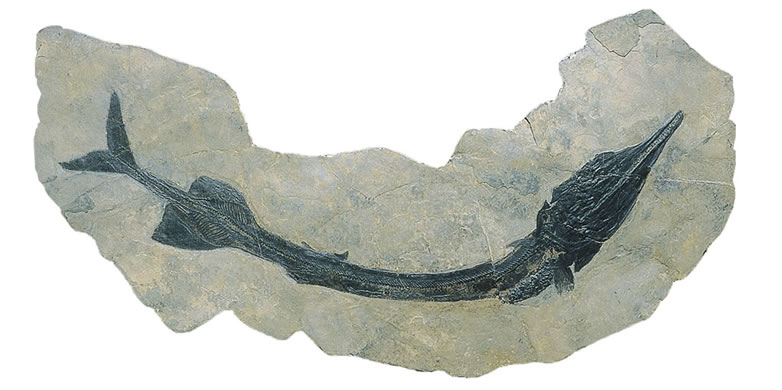Saurichthys
Fossilized predators of the primeval oceans
Special exhibition, 15 January to 1 March 2015
At a maximum of two metres in length, the long-extinct Saurichthys was among the largest predatory fish of the Triassic period (201 to 252 million years ago) and was common across the world’s oceans at that time. More than 70 species have been described from fossil remains in Europe, Asia, Africa and North America.
At a maximum of two metres in length, the long-extinct Saurichthys was among the largest predatory fish of the Triassic period (201 to 252 million years ago) and was common across the world’s oceans at that time. More than 70 species have been described from fossil remains in Europe, Asia, Africa and North America.
A particularly large number of well-preserved specimens were retrieved during fossil excavations of the Paleontological Institute and Museum of the University of Zurich at the classic vertebrate fossil site of Monte San Giorgio in the southern Ticino (a UNESCO natural heritage site since 2003) and in the Ducan mountains near Davos.
A Sinergia project of the Swiss National Science Foundation has made it possible to analyse the rich fossil material in the last three years. Discoveries included some new species as well as extraordinary finds of fossilized prey remains and soft tissue.
The special exhibition of the Paleontological Institute and Museum shows spectacular finds of Saurichthys, along with illustrations and models. It also includes films showing the excavation and preparation of the fossils as well as diagrams explaining the latest findings about the evolution, lifestyle and reproduction of these primeval predators of the Triassic oceans.
